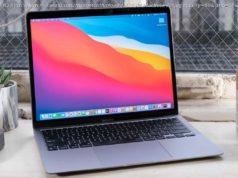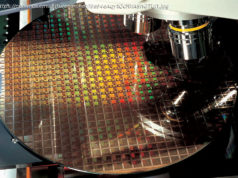Apple has finally updated the MacBook Air. Sort of. Because Apple doesn’t just kill old products, it’s left the old MacBook Air up for sale for $1,000. You should not buy it. Ever. If someone you love comes home with its box in their hands please slap it out of their hands. And if they come home with a brand new MacBook you might want to slap it out
Apple has finally updated the MacBook Air. Sort of. Because Apple doesn’t just kill old products, it’s left the old MacBook Air up for sale for $1,000. You should not buy it. Ever. If someone you love comes home with its box in their hands please slap it out of their hands. And if they come home with a brand new MacBook you might want to slap it out of their hands too, because with the many updates to the MacBook Air the MacBook is looking like a real bad buy.
The little MacBook has never been a great buy. It’s too expensive for what it is—a very small and light laptop powered by a 7th-Gen Y-series processor from Intel. For $1,300 you can get a lot more laptop for your money from the Windows end of the spectrum. But now for $1,200 you can also get a lot more laptop for your money from Apple, too.
With its 8th-generation Y-series i5 processor the MacBook Air is going to likely be faster than anything but the i7 MacBook (which starts at $1,600!). It may even be faster than the i7—but we can’t be for sure as the MacBook Air has a new 8th-gen CPU that has not yet been announced by Intel and does not appear to be available in any other device currently on the market.
The MacBook Air’s 13.3-inch 2560 by 1600 resolution display is noticeably larger than the MacBook’s 12-inch 2305 by 1440 display (they have approximately the same pixel density). It’s a small difference, but you’ll notice it if your desktop every gets crowded with files and windows. The display is also nice and vibrant—not quite as nice as the new MacBook Pro, but infinitely better than the old Air’s display. Speaking of the old Air—this thing has much smaller bezels than that eyesore as well, and a way higher pixel density—about 227 ppi versus 127 ppi. Opening the laptop up the new Air looks like a modern device while the old one looks like something from 2014…if you’re lucky.
But you’ll notice, once it’s open, that it also sort of looks like a MacBook with some speakers added to either side of the keyboard. The keys and Force Touch trackpad look similar, and the keys have that same sheen all Apple laptop products seem to possess. Typing on them is the same slightly frustrating experience of the latest MacBook Pro. They’re not awful, they have a decently pleasing clack, but only a liar would praise the Air, or any MacBook, for its typing experience.
Yet around the side the cheaper MacBook Air has something the MacBook lacks—a second Thunderbolt and USB-C port. The MacBook only has one, which has to handle all input and output as well as charging. The MacBook Air has two, and, a 3.5mm audio jack on the opposite side. It’s also tapered, like the older Air, and is thus thinner on one side than the other.
Apple has taken two things that have worked very well—the design language of the MacBook and MacBook Pro, and the lower cost and wedge shape of the original MacBook Air, and created a device so reasonable you’ll find yourself wondering what the point of the MacBook even is. It’s more expensive, slower, with a smaller display and lower resolutions, and no Touch ID. All for, at minimum, $100 more.
The only benefit the MacBook seems to have over the new Air is that it’s smaller and lighter, but is carrying a laptop that weighs 2.03 pounds instead of 2.75 pounds really a good enough reason to spend a little more money? I suspect not, but we’ll know more when the MacBook Air is available next week.






